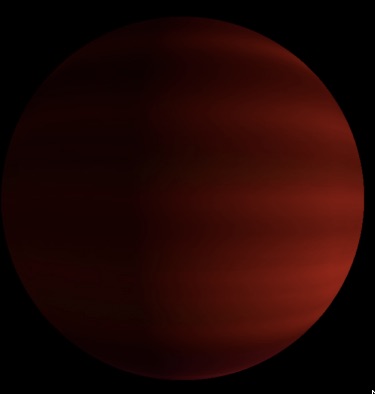HATS-17b is a warm planet with a mass close to that of Jupiter, that orbits around a Sun-like star about once every 16.255 days. The host star of HATS-17b has ~1.13 times the mass and ~1.09 times the radius of the Sun. Additionally, the host star’s surface temperature is estimated to be 5846 ± 78 K and the luminosity is about 25 percent greater than the Sun. By measuring how much light the plant blocks when it transits its host star, the radius of HATS-17b is estimated to be 0.777 ± 0.056 times the radius of Jupiter.
When radial velocity measurements were used, HATS-17b seemed to be 1.338 ± 0.065 times the mass of Jupiter. Knowing the size and mass of the planet, the density of HATS-17b can be calculated and is found to be ~3.50 g/cm³, roughly 30 percent denser than aluminum. The density of HATS-17b is remarkably high for an object with its mass. For comparison, the mean density of Jupiter is 1.326 g/cm³.
Interior models of HATS-17b suggest that ~50 percent of the planet’s mass is composed of a massive core of heavier elements. This works out to be around 200 times the mass of Earth. The massive core of HATS-17b is consistent with the high metallicity of its parent star. A star’s metallicity refers to the abundance of elements heavier than hydrogen and helium. The host star of HATS-17b has roughly twice the metallicity of the Sun and a more metal-rich protoplanetary disk can form massive cores more efficiently.
The host star HATS-17 has an apparent magnitude of 12.4, with an absolute magnitude of 4.75. It is 1.13 times more massive and 1.09 times larger compared with our sun. The surface temperature is 5846 K with a spectral type of G. In this planetary system, the extrasolar planet HATS-17 b orbits around the star HATS-17 with its orbital distance of 0.1308.
Journal Articles
1.) HATS-17b: A TRANSITING COMPACT WARM JUPITER IN A 16.3 DAYS CIRCULAR ORBIT
WEB Articles
1.) HATS-17b is a Warm-Jupiter Denser than Aluminium
2.) Our research: HATS-17b: a transiting compact warm Jupiter in a 16.3 days circular orbit



